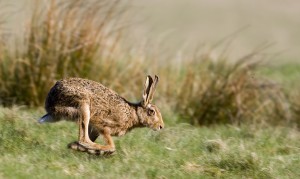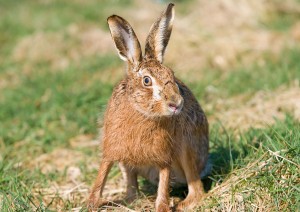Hare sightings

As hares are predominantly a nocturnal species, getting to see them during the day is always a treat. The chances of this increases around this time of year, as the breeding season is coming to an end, consequently increasing the competition between local bucks. Despite being named ‘March madness’, the chasing and boxing behaviour associated with competing males and disinterested females occurs throughout the breeding season, which lasts from January right through to August. However, the most that many of us will get to see is a white rump as the hare runs away at speeds of up to 40mph.

For a chance to see one it’s worth taking a walk towards either of our hides through the Mains of Dun farm (starting from the Old Mill car park). Not only is the farmland perfect habitat for hares but a number of individuals have been spotted regularly in that area. If you haven’t spotted a hare by the time you’ve reached the Wigeon hide (providing its low tide) then take a quick scan of the salt marsh in front of you. The inaccessibility of the marshes to predators results in a relaxed foraging behaviour in the hares, giving you the perfect opportunity to get a good look at one.
Georgina Bowie (Visitor Centre Assistant)
Help protect Scotland’s wildlife
Our work to save Scotland’s wildlife is made possible thanks to the generosity of our members and supporters.
Join today from just £3 a month to help protect the species you love.
Preface
As hares are predominantly a nocturnal species, getting to see them during the day is always a treat. The chances of this increases around this time of year, as the …
